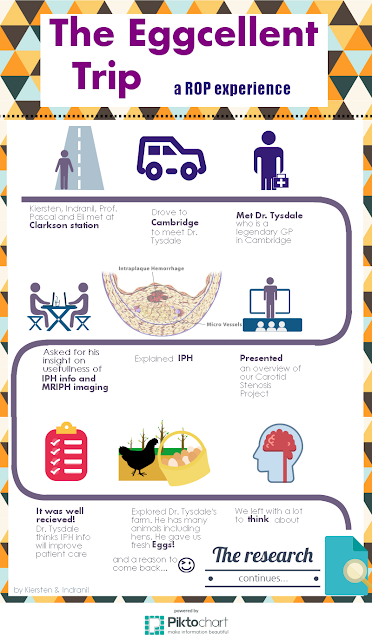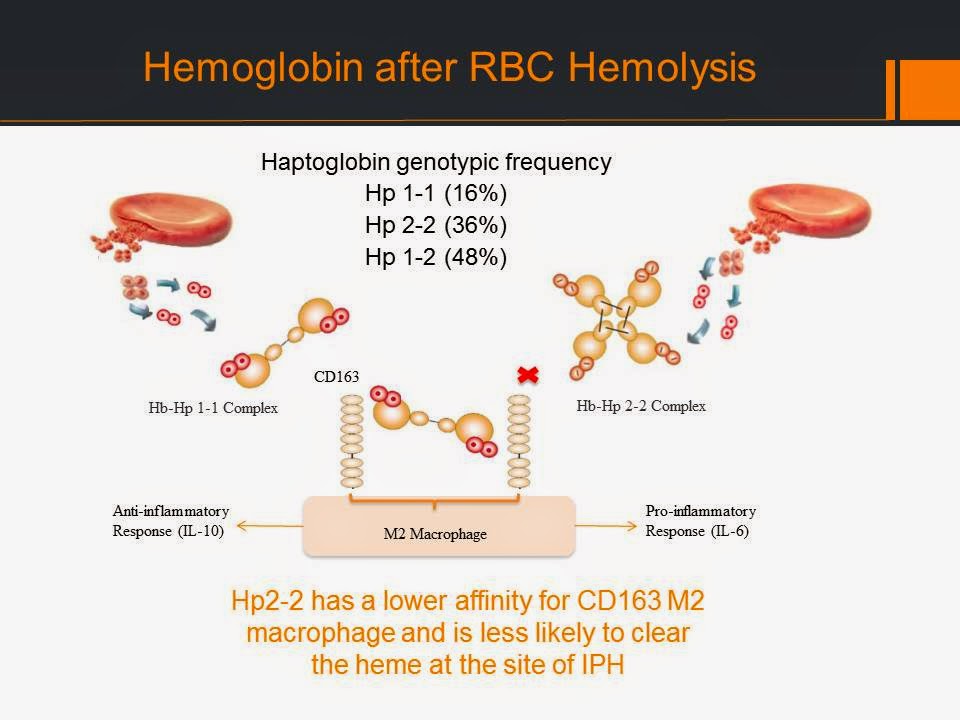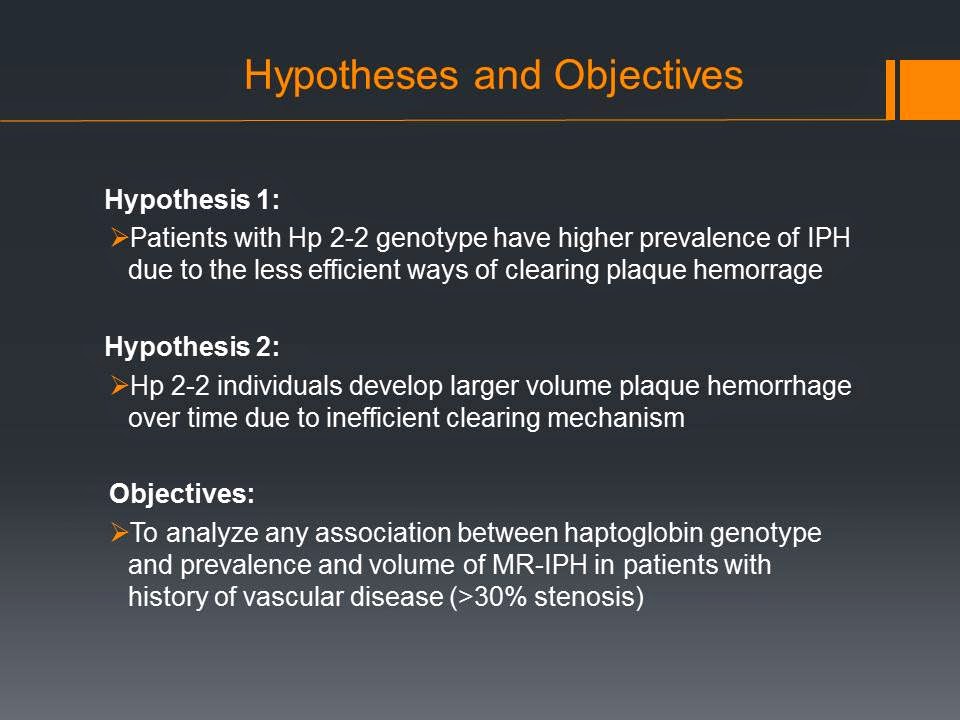Last Wednesday, my ROP students Kiersten and Indranil, and UofT medical student Eli Lechtman had the opportunity to interview the legendary (see here) Dr. Kim Tysdale – a general practitioner in Cambridge, Ontario.
Why do you ask? Well each year 50,000 Canadians suffer from a stroke with 26% due to carotid artery disease. Carotid artery stenosis is the narrowing of the carotid arteries due to plaque buildup (see atherosclerosis). These plaques can then rupture and create blood clots that travel up to the brain. In turn, these blood clots then get stuck in the brain’s smaller blood vessels, causing a stroke. So plaque = bad and ruptured plaque = worse!
What if we had a clue as to which plaque may rupture? Well, in turns out that the presence of intraplaque hemorrhage (IPH) can help us predict just that! IPH is bleeding within the plaques, which causes them to become more vulnerable (see vulnerable plaque). There is a 6 times greater risk of stroke in people with IPH! And…. a new medical imaging technique called MRIPH imaging allows for visualization of IPH. MRIPH is similar to traditional MRI but highlights the artery walls and looks at the arterial plaques.
While in Cambridge, Kiersten, Indranil, and Eli presented Dr. Tysdale with an overview of medical imaging techniques for the assessment of carotid artery stenosis with an emphasis on the new MRIPH technique. Informing physicians like Dr. Tysdale which of his patients are more at risk of having vulnerable plaques (by providing information on IPH) could result in patients receiving more appropriate and timely treatment – thereby reducing the number of strokes!
BTW, we had Dr Tysdale at “hello” (not sure what I am referring to? See here).
So what up with the eggs? Kiersten, Indranil, and Eli also had the chance to tour Dr. Tysdale’s beautiful country house and meet his lovely wife (and nurse!), Eva, who sent everyone home with fresh chicken eggs! Awesome.
Thank you Dr Tysdale for being such a great sport!
Here is their infographic of the trip (great job gang!). Enjoy!
 |
| Kiersten Thomas and Indranil Balki – ROP Summer 2015 |
Stay tuned for more ROP adventures!
Pascal Tyrrell







